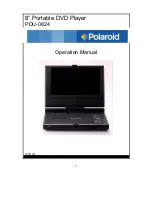
GENERATORS
- 17 -
IS 6.5
GB
2 Prescriptions for safety during installation and
setup
- The personnel in charge of installation and starting
of the generator must always wear a protective
helmet, safety shoes and overalls.
- Use protective gloves.
- Do not leave disassembled parts, tools or anything
else not forming part of the system on or near the
engine.
- Never leave inflammable liquids or cloths soaked in
inflammable liquids in proximity of the generator,
near electric equipment (including lamps) or parts
of the electrical system.
- Take the necessary precautions to prevent the
danger of electrocution.
- Check that the earthing system has been installed
and constructed in accordance with regulations.
3 INSTALLATION
3.1
Characteristics of the installation space
The generator must be installed in a sufficiently aired
space, supplying a little amount of air necessary for the
combustion of the motor.
The space must be separate and acoustically insulated
from living areas.
The generator should be positioned so that normal
maintenance operations can easily be carried out.
Propulsion motors are recommended for installation in
the area as long as they comply with the above-men-
tioned conditions.
3.2
Fastening the unit to the ground
To fasten the unit securely, a base should be installed to
absorb vibrations and support the weight.
Drill holes in the base according to the instructions in
fig. 1.
3.3
Ventilation
The generator is equipped with an internal forced cooling
system through a water/air exchanger.
The air needed for combustion is taken in through the
opening on the base (fig. 2) so care must be taken to
ensure that this opening is always free.
4 COOLING WATER CIRCUIT
The engine of generators IS 6.5 / 7.6, is cooled by an
closed circuit system heat exchanger.
On installation a sea water feed circuit should be fitted for
cooling and a waste system to expel the mixture of flue
gas and water.
4.1
Sea water feed system
Boats usually use one of two systems to collect water
(fig. 3):
1
- Direct infeed system
2
- System with baffle
MASE recommends the direct infeed system (ref.1 fig. 3)
since this system prevents water under pressure enter-
ing the suction ducts and instead forms a pressure which
can easily be overcome by the water pump of the electric
generator.
Do not apply any type of protective
hood to the direct infeed system.
The baffle system might cause the following problems:
a
- If it is installed with the slots facing the prow.
In this case, during navigation and with the electric
generator off, pressure is accumulated in the water
infeed duct which might cause the system to fill up,
even as far as the exhaust port, allowing water to
enter the cylinders.
b
- If it is installed with the slots facing the stern.
In this case a depression might accumulate in the
water infeed duct during navigation, preventing the
water pump from starting up the cooling plant, or
limiting the capacity and subsequently causing the
electric generator to overheat.
4.2
Typical installation with electric generator
above the water-line (fig. 4)
1
Sea intake
2
General tap-water
3
Tap to drain system
4
Water filter
5
Electric generator
6
Barrel muffler
7
Silencer
8
Sea drainage nozzle
9
Water line
A
- Tubes, internal diameter 50 mm
B
- Tubes, internal diameter 15 mm
C
- Clamps
D
- Tubes, internal diameter 50 mm
The measurements shown in fig.
4-5 should correspond exactly.
The muffler (fig.4, ref.6) has the job
of collecting the water in the exhaust pipes when the
generator motor is turned off, thus preventing it from
flowing into the motor through the exhaust manifold
and valve. For this reason it is essential that the
position of the muffler and the length of the pipes
indicated on the installation chart be fully respected.































